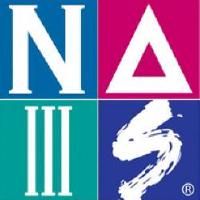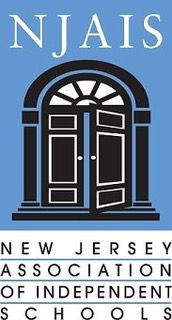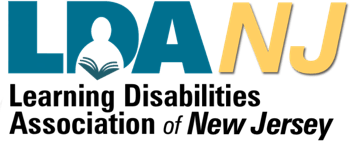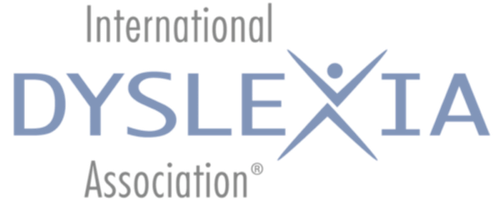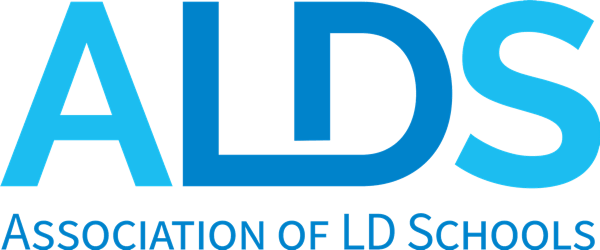School physical education and sports programming are intended to contribute positively to the physical, cognitive, and social-emotional development of young people. However, many students, including those with exceptionalities, may be reluctant to participate in these programs for a variety of reasons (e.g. low self-confidence, fear of making mistakes, difficulty following the rules of the game). This year, when many schools eliminated or reduced recess, sports offerings, and physical education classes, we, at The Craig School, have been able to offer meaningful opportunities for our students to develop their physical fitness along with fostering prosocial behaviors, like sharing, cooperating, and helping one another. While we did have to make adjustments to the sports and physical education programs, our students have had and will continue to have opportunities to move, play, and interact socially with one another outside of the traditional classroom.
Physical activity provides more than cardiovascular benefits and stress reduction; movement is integral to learning. Dr. John Ratey, Associate Clinical Professor of Psychiatry at Harvard Medical School writes about the benefits of physical activity and brain development, “...it optimizes your mind-set to improve alertness, attention, and motivation; it prepares and encourages nerve cells to bind to one another, which is the cellular basis for logging in new information; and it spurs the development of new nerve cells from stem cells in the hippocampus.” Physical activity, whether through participation in sports, a physical education class, or movement-based learning activities in the classroom, not only prepares students for learning but also helps students retain what they are learning. In short, movement helps learning stick.
As an educator, one of the benefits I appreciate most about The Craig School’s physical education and sports programming is the opportunity our students have to practice and strengthen their executive functioning skills, the “brain-based skills required for humans to effectively execute, or perform, tasks and solve problems” (Guare, Dawson, & Guare, 2013). When playing on a team, for example, cognitive flexibility is needed as task demands shift quickly, the ability to plan and prioritize is useful as participants try to anticipate the behavior of teammates and opponents, and students engage in goal-directed persistence as situations in the game changes and immediate decisions are needed. Additionally, the executive functioning skill sustained attention is leveraged when players engage in strategic thinking. Finally, participants activate working memory to coordinate gross motor movements with complex cognitive demands.
At The Craig School, we develop sports programs and physical education classes that give students, who may have had previous negative experiences with sports, a chance to start again. Providing a safe, positive space to explore moving their bodies and learning gameplay provides students opportunities to build their self-confidence and self-esteem, to learn from one another, to develop friendships, and to become better learners.
Have you ever found yourself in a parent-teacher conference or an IEP/ISP meeting confused about some of the language used? As educators, we (and I include myself!) are guilty of using educational jargon, acronyms, and technical words that mean something to us yet may leave parents scratching their heads. Over the past few weeks, several in the community have asked about different types of assessments and what they mean. At The Craig School, our academic program is comprehensive and evidence-based, that is, we use interventions, supports, and services with proven evidence of effectiveness. Each student’s academic program ultimately is determined by using a data-based decision-making process reliant on assessment.
Assessment informs a teacher’s instructional practices and strategies, decisions regarding supports and services, and the interventions employed for the specific needs of each student in order for students to achieve and grow academically. Assessment may also be used as a marker to indicate a student’s mastery of content or their ability to demonstrate their learning resulting in the student’s earned grades (e.g. projects, papers, tests, etc.). There are many types of assessments and untangling what it all means can be somewhat overwhelming.
While not exhaustive, below is a primer, if you will, of the types of educational assessments typically found in schools. You may find this helpful when discussing progress reports, goals & objectives, IEP/ISPs, or Present Levels of Academic Achievement and Functional Performance (PLAAFP).
Assessment Terminology Primer
Assessment
Assessment is data collected about a student in order to make decisions. These decisions may be diagnostic (information about the specific nature of the student’s learning disability) and evaluative (information about the student’s strengths, overall progress, and areas for growth). Additionally, assessments help in the development of IEPs/ISPs, for planning instruction based on the needs of the student, for eligibility decisions (i.e. student eligibility for special education and related services), and educational placement (general education, self-contained classroom, etc).
Criterion-Referenced Assessment
This type of assessment lets us know what the student can and can not do. Criterion-referenced assessments are seen in the classroom (e.g. tests, quizzes, etc.) and measure a student’s performance against a pre-determined set of knowledge and skills. For example, our middle school math teachers may give students a quiz on 8th-grade math computation problems.
Curriculum-Based Measurements (CBM)
Teachers use CBM to find out how their students are progressing in learning the content for the academic year. CBM is typically applied to core academic areas such as spelling, writing, math, and reading. CBM can be used for progress monitoring. Oral Reading Fluency (ORF), a measure found in all divisions of the school (dependent upon student need) is an example of CBM.
Formative & Summative Assessment
These two types of assessments are most commonly applied in the everyday classroom setting and are used so students can express their level of content knowledge, skills, and understanding. Formative assessment is used to indicate where students are in the process of learning. They are “forming” their learning. Summative assessment can be thought of as an endpoint. Through summative assessment, students show their mastery of the content. Final exams in our high school are summative assessments and quizzes and projects sprinkled throughout the trimester, are examples of formative assessment.
Formal & Informal Assessment
Formal assessments are not content and performance-driven, rather they are data-driven assessments. They are standardized and typically have percentiles, stanines, and standard scores. Norm-referenced tests, like the GORT-5 (Gray Oral Reading Test), are examples of a formal assessment. Informal assessments are content and performance-driven and not data-driven. A writing sample or essay can be used as an informal assessment of literary and narrative writing (e.g. use of hyperbole, simile, metaphor, etc.)
Goals & Objectives
In the Lower and Middle School, Goals & Objectives describe what students will learn or focus on. Goals are the big concepts that run throughout the school year, objectives are how a student reaches the goal, evaluation is made up of the tools used for assessment, and criteria provide an explanation of the expectation for student performance. In middle school science, a goal for the year is to “use scientific skills and processes to interpret, model, and explain phenomena.”
One objective to reach that goal is to “read science texts to determine main ideas, gather technical information, and identify patterns in data.” The way the teacher will assess the student is through class assignments and projects. Finally, academic achievement is shown when the student can perform this skill with 80% accuracy.
Norm-Referenced Assessment
A norm-referenced assessment compares student performance to other students’ performance with similar age and/or grade in school. The TOWL (Test of Written Language), GMADE (Group Mathematics Assessment and Diagnostic Evaluation), and GRADE (Group Reading Assessment and Diagnostic Evaluation), all used in the lower and middle school are norm-referenced assessments. In the high school, the SAT or ACT are examples.
Progress Reports
Progress reports, used in the high school, provide information necessary to understand a student’s strengths and challenges, the instructional strategies most effective for a particular student’s educational needs, current student performance status with numerical grades, and how teachers are addressing areas of concern. Grades in a progress report are not final. These reports illustrate how well the student is doing, giving students information needed for corrective action to meet their educational goals.
Progress Monitoring
Progress monitoring helps teachers determine if the student is improving towards their goals and is an indicator of the appropriateness of a student’s educational program/intervention. Progress monitoring gives teachers the information needed to adjust their approach with the student. Sometimes you may hear the word, benchmark, used with progress monitoring. A benchmark tells us where the student is at in a specific content area. A good example of this is in our Orton-Gillingham classes. Orton-Gillingham is prescriptive and diagnostic, however, there is also consistent reflection and analysis of student progress embedded within the instructional approach.
Screening
Screening helps identify students who are at risk for not meeting a certain academic standard or benchmark. For example, in Mrs. Gallagher’s English class at the high school, all of her students take the Self-Regulation Questionnaire (Brown, Miller, & Lawendowski, 1999) at the beginning of the school year. This short screen helps her identify which students may need skill-building and additional support as they develop a greater ability to self-regulate for optimal learning.
The most effective school-home partnerships are bi-directional and use child-focused approaches wherein families and educators cooperate, coordinate, and collaborate to enhance opportunities for success for students across social, emotional, behavioral, and academic domains. What we know from a vast body of research over the past four decades is that home-school partnerships steeped in open and honest communication, along with responsibility-taking for working together as a team and shared common goals, resulting in mutual child-centered decision-making focused on positive student outcomes. It is within this relationship of families and professionals that every child’s education takes place. As parents and schools learn the value of collaboration, communication, and creating meaningful partnerships, together we create an educational environment that supports the abilities of all children to succeed.
The following provides a guide to navigate through the Parent-Teacher Conference process:
A Parent’s Guide to Successful Parent-Teacher Conferences
Before the Conference
During the Conference
After the Conference
A Teacher’s Guide to Successful Parent-Teacher Conferences
Before the Conference
During the Conference
After the Conference
“We help our parents assess their child’s true potential and understand the nature of learning disabilities, and provide our families an internal support network within the Craig community.”
The culminating line of The Craig School mission statement has been on my mind lately. How do we build community and authentic parent-school partnerships in a world that looks, feels, and in many ways is, so different than what we have previously known? Not only is it our mission at The Craig School to champion awareness, acceptance, and understanding of learning differences but it is also our mission to promote a support system among our parents, to provide opportunities to share our stories as parents of students with learning disabilities, and to partner with you as we provide an educational environment primed for student growth and achievement. According to Abright and Weissberg (2010), parent-school partnerships are child-focused approaches wherein families and educators cooperate, coordinate and collaborate to enhance opportunities for success for students across social, emotional, behavioral, and academic domains. There are structural elements that provide a means to this end, such as parent-teacher conferences, becoming a member of our Parents’ Association (PACS), or volunteering at your child’s school, all part of The Craig School experience. However, it is argued that these parent-school partnerships must go a step further and become bi-directional. That is from parent to school and from school to parent. Through bi-directional parent-school relationships, such as two-way information sharing and joint decision making and collaboration, pathways are formed for improved student outcomes. As you get to know the teachers at The Craig School, you will find individuals that are communicative and ready to partner with you. This is also true of the administration and staff at The Craig School.
For more information on ways of giving or to make a donation online you can clicking here.
